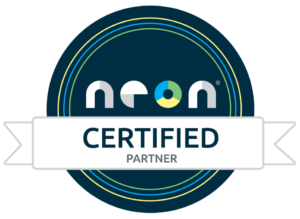
Frequently Asked Questions
Do you have a Data Dictionary?
Yes! You can access our Data Dictionary here: https://truegivers.com/integrations/data-dictionary
How can I access my API Key?
In NeonCRM, API Keys are based on NeonCRM system user accounts. We recommend creating a new user account for each integration you enable. This makes it easier to disable a single integration at a later time.
To access your Valid API Key, you will need to create one. You can create an API key in your Settings > User Management.
Read more about what information you need here: NeonCRM - Setup.
Who can I contact to help me create my customizations?
We provide full instructions on how to create customizations in NeonCRM. You can find these instructions here: NeonCRM - Setup. If you are having issues accessing your NeonCRM account or customizations, please visit the NeonCRM Support Center.
How do you prevent duplicate records?
TrueGivers only processes records that are present in your account. We do not create any new records and instead we will synchronize data with the current fields present within each specific account. Additionally, for each account or address being synchronized, we make sure that we are referencing an Individual Account ID or an Address Key to avoid any duplications. For example, if we find that one of your donors moved, we will synchronize their address for you in a format that complies with USPS standards.
Do you identify duplicate records?
Yes, we do provide a duplicate identification service. Visit the Update Display page by clicking on the Update Name located underneath the map. You will see an Input Data Report and a Mailing Address Report. The Input Data Report provides a count of duplicates that TrueGivers identified. Read about it more on NeonCRM-Training.
How do I purchase credits?
You can purchase credits by clicking on the Purchase Credits button in the blue notification box on your Data Stewardship Dashboard. This will pop-up a purchase form to purchase credits.
You can also purchase credits by clicking the User Menu dropdown located in the top right corner of your screen. Then, click Credits. This will pop-up a purchase form to purchase credits.
What does the data on my Data Stewardship Dashboard tell me?
The Data Stewardship Dashboard provides high-level summary information of the data processed. Read more about the dashboard on NeonCRM-Training.
Why is my Total Records count in NeonCRM different from my TrueGivers Total Record count?
Your Total Records count in NeonCRM could be different from the Total Record count provided by TrueGivers because we only pull down records that are identified as individual accounts by NeonCRM. Organization accounts are not currently downloaded into TrueGivers.
Where does the Individual & Household (demographic) data come from?
TrueGivers sources data from many different suppliers. We curate each attribute by combining as many sources as possible. We use the best data available to provide the greatest coverage and the highest quality. This allows us to deliver high match rates and attributes with a narrow focus. Read more about our Individual & Household Enhancement data.
Is synchronized data automatically applied to my NeonCRM Mailing Report?
No, but you can some additional configurations to your mailing report for this data to be applied. Read more about the NeonCRM Mailing Report here.
What are Tasks and what do they do?
Data Stewardship Tasks are based on data enhancement identified during update processing. They provide a specific action you can take on a specific record to improve data stewardship – and ultimately your relationship with your donor. First, tasks are internal notifications for you and your team to keep your database as clean and ready-to-use as possible. This helps you practice regular maintenance and avoid clunky batch updates. Second, tasks are designed to help you stay in regular communication with your donors by leveraging the data in your CRM. We prompt you to take small steps that bolster your relationships.
Interacting with TrueGivers' Stewardship Tasks does not actually carry out the action stated in the task. Instead, it is an internal way to track your data clean-up or donor communications. Read more about tasks here.
Get in touch!
Fill out the form below, and we'll get back to you as soon as we can. We look forward to hearing from you!
